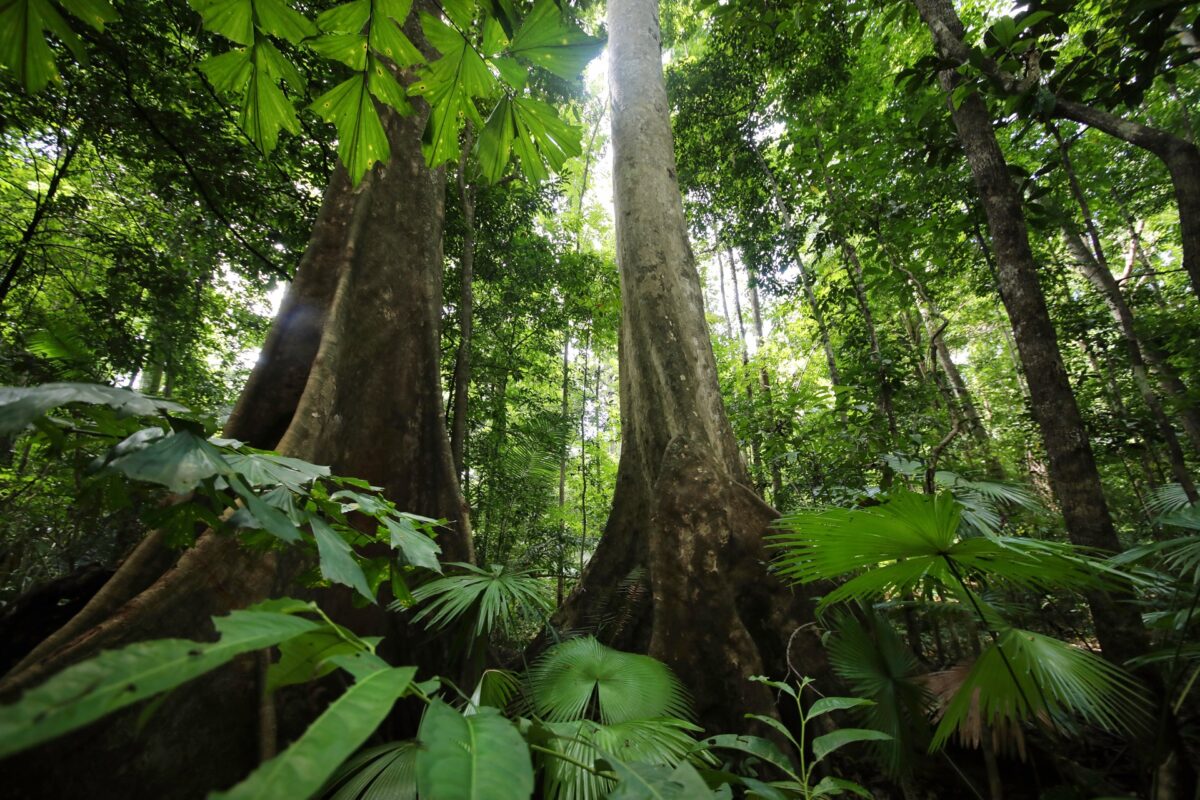Planted Forests Store More Seeds Than Natural Ones—a Surprising Boost for Reforestation (Partially Approved) | Newswise – Newswise

Report on Forest Soil Seed Banks and Their Contribution to Sustainable Development Goals
Introduction: Aligning Forest Ecology with Global Sustainability Targets
The effective management and restoration of forest ecosystems are fundamental to achieving the 2030 Agenda for Sustainable Development. Soil seed banks (SSBD), the reserve of viable seeds within the soil, represent a critical natural asset for ensuring ecosystem resilience, maintaining biodiversity, and supporting community succession. Understanding the dynamics of SSBD is directly linked to advancing SDG 15 (Life on Land) by improving strategies to halt biodiversity loss and restore terrestrial ecosystems. Furthermore, as forest health is intrinsically connected to climate regulation, this research provides vital data for SDG 13 (Climate Action) by informing climate-smart forestry practices. This report analyzes the findings of a large-scale comparative study on SSBD in natural and planted forests, highlighting its implications for global sustainability.
Research Overview and Methodology
Study Scope
A comprehensive comparative analysis was conducted to investigate the macro-scale patterns and driving factors of SSBD. The research was based on data collected from over 900 forest sites across China, including:
- 537 natural forest sites
- 383 planted forest sites
Analytical Approach
The study quantified the direct and indirect influences on SSBD by applying structural equation modeling and regression analysis to a range of variables. Key factors analyzed included:
- Climatic Variables (e.g., temperature, precipitation)
- Soil Variables (e.g., nitrogen, phosphorus, pH)
- Forest Stand Characteristics (e.g., age, density, tree diameter)
Key Findings: A Comparative Analysis for Sustainable Forest Management
Soil Seed Bank Density (SSBD)
The analysis revealed a significant difference in seed bank density between forest types. On average, planted forests exhibited a higher SSBD (3.137 m⁻²) compared to natural forests (2.876 m⁻²). This suggests that managed, planted forests can harbor substantial regenerative potential, a key resource for targeted restoration efforts under SDG 15.
Influence of Climatic Factors (SDG 13: Climate Action)
Climatic conditions were found to have a significant impact on SSBD, underscoring the importance of integrating climate data into forest management to build resilience in line with SDG 13.
- Temperature and Precipitation: SSBD in both forest types showed a decline with increases in mean annual temperature (MAT) and mean annual precipitation (MAP).
- Sunlight and Evapotranspiration: Longer sunlight exposure and greater evapotranspiration correlated with higher SSBD.
- Ecological Plasticity: Natural forests demonstrated greater responsiveness to climatic shifts, indicating a higher vulnerability that must be managed to mitigate the impacts of climate change.
The Dominant Role of Soil Health (SDG 15 & SDG 2)
The study identified soil nutrient factors as the most significant drivers of SSBD, explaining up to 37.7% of its variance. This highlights the foundational importance of soil health in achieving sustainable land management as outlined in SDG 15 and its connection to land productivity, which supports SDG 2 (Zero Hunger).
- Natural Forests: Soil pH emerged as the most influential variable, making its management critical for preserving the ecological integrity and native biodiversity of these ecosystems.
- Planted Forests: Soil nitrogen content was the most impactful factor, indicating that managing soil fertility is key to maximizing the regenerative capacity of these forests. Reductions in SSBD were observed with increased phosphorus and pH levels.
Forest Structure and Stand Characteristics
Structural attributes of the forests also played a measurable role in SSBD dynamics. SSBD was observed to increase with forest age and the average diameter of trees, while it decreased with higher stand density. These findings provide practical guidance for silvicultural practices aimed at optimizing natural regeneration.
Implications and Recommendations for Achieving the SDGs
Strategic Interventions for SDG 15: Life on Land
The research provides actionable insights for policymakers and land managers working to restore degraded landscapes and manage forests sustainably. The following recommendations can directly support the achievement of SDG 15 targets:
- Implement Targeted Soil Management: In natural forests, prioritize the monitoring and maintenance of optimal soil pH levels to protect their unique ecological functions and conserve biodiversity.
- Enhance Nutrient Availability in Planted Forests: For reforestation projects, focus on maintaining adequate soil nitrogen levels to enhance SSBD and accelerate the recovery of ecosystem services.
- Guide Ecological Restoration: Utilize these findings to inform the selection of sites and management techniques for restoring degraded lands, ensuring that interventions are tailored to local soil and climate conditions for greater success.
Advancing SDG 13: Climate Action
By clarifying the complex interplay between climate, soil, and forest regeneration, this study contributes directly to strategies for SDG 13.
- Enable Climate-Smart Forest Design: The data supports the development of forestry models that are resilient to global climate stress by matching forest types and management strategies to specific environmental conditions.
- Strengthen Ecosystem Resilience: Understanding how different forest types respond to climatic variables allows for proactive measures to enhance their adaptive capacity and ensure their continued role as carbon sinks.
Supporting Broader Development Goals (SDG 2, SDG 6, SDG 17)
The principles derived from this research extend beyond forest-specific goals. Sustainably managed, resilient forests contribute to stable water cycles (SDG 6: Clean Water and Sanitation) and support the productivity of adjacent agricultural lands (SDG 2: Zero Hunger). Furthermore, this research, supported by multiple institutions, exemplifies the collaborative approach required by SDG 17 (Partnerships for the Goals) to address complex environmental challenges.
Which SDGs are addressed or connected to the issues highlighted in the article?
-
SDG 15: Life on Land
The article’s core focus is on forest ecosystems, including their regeneration potential, biodiversity maintenance, and the restoration of degraded landscapes. It directly addresses the health and management of terrestrial ecosystems.
-
SDG 13: Climate Action
The research explicitly discusses the impact of “global climate stress” and climatic factors like temperature and precipitation on forests. It promotes “climate-smart forest design” to enhance ecosystem resilience and adaptive capacity to climate change.
-
SDG 2: Zero Hunger
The article’s emphasis on soil health, including nutrient content (nitrogen, phosphorus) and pH levels, and the restoration of “degraded landscapes” directly relates to improving land and soil quality, which is fundamental for sustainable agriculture and food production systems.
-
SDG 12: Responsible Consumption and Production
The findings support the sustainable management of natural resources by providing key insights for policymakers and land managers on how to improve reforestation outcomes and implement sustainable forest management strategies.
What specific targets under those SDGs can be identified based on the article’s content?
-
SDG 15: Life on Land
- Target 15.2: Promote the implementation of sustainable management of all types of forests, halt deforestation, restore degraded forests and substantially increase afforestation and reforestation globally. The article provides direct insights for improving “reforestation outcomes” and “forest management strategies.”
- Target 15.3: By 2030, combat desertification, restore degraded land and soil, including land affected by desertification, drought and floods, and strive to achieve a land degradation-neutral world. The research offers “key insights for forest policymakers, ecologists, and land managers seeking to restore degraded landscapes” by focusing on soil health.
- Target 15.5: Take urgent and significant action to reduce the degradation of natural habitats, halt the loss of biodiversity. The article identifies soil seed banks as vital for “biodiversity maintenance” and vegetation recovery.
-
SDG 13: Climate Action
- Target 13.1: Strengthen resilience and adaptive capacity to climate-related hazards and natural disasters in all countries. The study highlights the importance of integrating climate data into forest management to “maintain ecosystem resilience” and guide restoration under “global climate stress.”
-
SDG 2: Zero Hunger
- Target 2.4: By 2030, ensure sustainable food production systems and implement resilient agricultural practices that…help maintain ecosystems…and that progressively improve land and soil quality. The article’s findings on the critical role of soil nutrients (nitrogen) and pH in ecosystem health are directly applicable to improving land and soil quality.
-
SDG 12: Responsible Consumption and Production
- Target 12.2: By 2030, achieve the sustainable management and efficient use of natural resources. The research supports this target by providing scientific data to inform “climate-smart forest design” and enhance the sustainability of forest management.
Are there any indicators mentioned or implied in the article that can be used to measure progress towards the identified targets?
-
Indicators for SDG 15 (Targets 15.2, 15.3, 15.5)
- Soil Seed Bank Density (SSBD): The article explicitly quantifies this indicator, stating that planted forests had a higher SSBD (3.137 m⁻²) than natural forests (2.876 m⁻²). This can be used to measure the regeneration potential and biodiversity reserve of a forest.
- Soil Nutrient Content: The study identifies soil nitrogen and phosphorus levels as key drivers of SSBD. Monitoring these nutrients can serve as an indicator of soil health and its ability to support ecosystem restoration.
- Soil pH: The article highlights soil pH as the “most influential variable in natural forests,” making it a critical indicator for monitoring the health of these ecosystems.
- Forest Stand Characteristics: The article mentions forest age, average tree diameter, and stand density as measurable factors that influence SSBD and reflect the structural health of a forest.
-
Indicators for SDG 13 (Target 13.1)
- Ecological Plasticity: The article implies this as an indicator by noting that “natural forests were more responsive to climatic changes, indicating higher ecological plasticity.” This responsiveness can be measured to assess an ecosystem’s resilience to climate change.
-
Indicators for SDG 2 (Target 2.4)
- Soil Nutrient Levels (Nitrogen, Phosphorus) and Soil pH: As mentioned for SDG 15, these are direct measures of soil quality, a key component of Target 2.4 for improving land for productive use.
SDGs, Targets and Indicators Analysis
| SDGs | Targets | Indicators |
|---|---|---|
| SDG 15: Life on Land |
15.2: Promote sustainable management and restoration of forests.
15.3: Restore degraded land and soil. 15.5: Halt biodiversity loss. |
– Soil Seed Bank Density (SSBD) (e.g., 3.137 m⁻²). – Soil nutrient content (Nitrogen, Phosphorus). – Soil pH levels. – Forest stand characteristics (age, tree diameter, density). |
| SDG 13: Climate Action | 13.1: Strengthen resilience and adaptive capacity to climate-related hazards. | – Ecological plasticity (measured by forest responsiveness to climatic changes). |
| SDG 2: Zero Hunger | 2.4: Implement resilient practices that improve land and soil quality. |
– Soil nutrient content (Nitrogen, Phosphorus). – Soil pH levels. |
| SDG 12: Responsible Consumption and Production | 12.2: Achieve the sustainable management and efficient use of natural resources. | – Adoption of management strategies matched to local soil and climatic conditions. |
Source: newswise.com

What is Your Reaction?
 Like
0
Like
0
 Dislike
0
Dislike
0
 Love
0
Love
0
 Funny
0
Funny
0
 Angry
0
Angry
0
 Sad
0
Sad
0
 Wow
0
Wow
0








































































